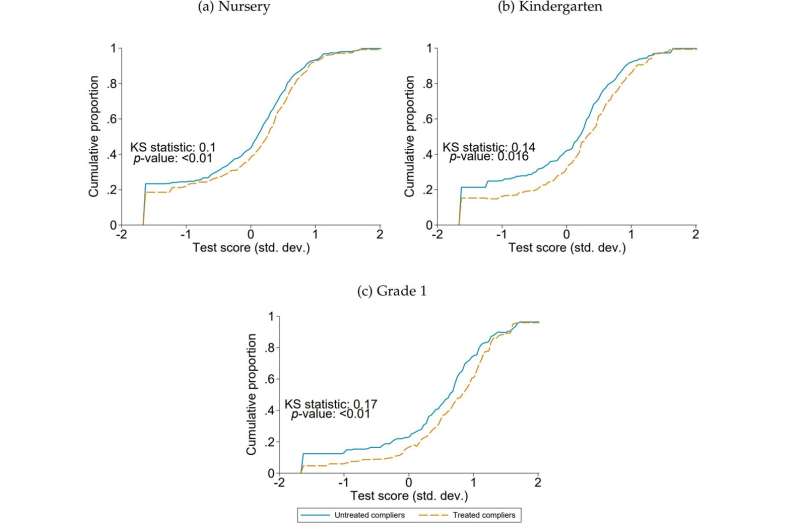This article has been reviewed according to Science X's editorial process and policies. Editors have highlighted the following attributes while ensuring the content's credibility:
fact-checked
proofread
Cutting the cost of education alone is not enough to prevent dropout, finds research

Recently, the French Education Minister, Pap Ndiaye, announced a potential education reform that would require private schools to diversify their student population to maintain their public subsidies from the State. Although this state intervention into private education is somewhat unusual, Ndiaye argues that public schools alone cannot achieve diversity. Similarly, India's Right to Education Act imposed a 25% quota on all private schools for students from disadvantaged schools, creating the largest affirmative action policy in the world in 2009.
Abhijeet Singh and Mauricio Romero analyzed the effect of this policy introduction in Chhattisgarh, a state with a population of approximately 29 million people, using a lottery-based allocation of oversubscribed slots in private schools. They found that lottery applicants were generally more educated and better off than eligible caste groups and the overall population in the state.
Additionally, the authors showed that most individuals who did not receive a seat in a private school through the lottery still attended a private school (if not the same school), indicating that the policy's effects were limited and casting doubt on its relevance.
Interestingly, the authors discovered that lower application rates from poorer students did not stem from a lack of interest in private education. Poorer households placed equal value on these schools, but faced stronger information constraints and barriers to applying, including factors such as lack of awareness about the policy, lack of internet access at home, and limited familiarity with online application portals.
The paper's most important conclusion, with broader implications for policy design in general, is that the policy lifted only one barrier (financial) out of many (including informational hurdles) faced by poorer households when sending their children to school. Therefore, to achieve the desired outcomes, all barriers must be lifted simultaneously. These findings underscore the importance of conducting thorough policy assessments and designing comprehensive solutions when implementing large-scale policies.
The research is available as a working paper through the RISE Working Paper Series.
More information: Mauricio Romero et al, The Incidence of Affirmative Action: Evidence from Quotas in Private Schools in India, RISE Working Paper Series (2022). DOI: 10.35489/BSG-RISE-WP_2022/088
Provided by Bocconi University





















